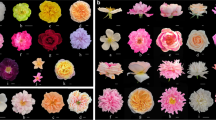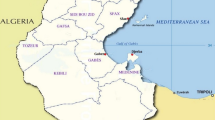Abstract
Quinoa (Chenopodium quinoa Willd.) is a staple seed crop in the Andean region of South America. Improving quinoa productivity is a primary food-security issue for this region, and has been part of the impetus for the establishment of several new quinoa breeding programs throughout the Andean region. Chilean quinoa has been characterized as morphologically diverse and bifurcated into coastal and highland ecotypes. The success of emerging breeding programs will rely heavily on the development of core germplasm collections and germplasm evaluation—especially of the coastal quinoa ecotypes that are often neglected in traditional breeding programs. Thus, the objective of this study was to characterize and quantify the genetic diversity within 28 Altiplano and 31 coastal Chilean accessions of quinoa using microsatellite markers. To facilitate the analysis, we also report the development of seven sets of fluorescent multiplexed microsatellite PCR reactions that result in genetic information for 20 highly polymorphic microsatellite loci. A total of 150 alleles were detected among the quinoa accession, ranging from 2 to 20 alleles per locus and an average 7.5 allele/locus. Both cluster (UPGMA) and principal component analyses separated the accessions into two discrete groups. The first group contained quinoa accessions from the north (Andean highlands) and the second group consisted of accessions from the south (lowland or coastal). Three accessions from Europe were classified into the southern quinoa group. The data obtained in the diversity analyses highlights the relationships within and among northern and southern Chilean quinoa accessions and provides the quinoa scientific community with a new set of easy to use and highly informative genetic markers.



Similar content being viewed by others
References
Chauhan GS, Eskin NAM, Tkachuk R (1999) Effect of saponin extraction on the nutritional quality of quinoa (Chenopodium quinoa Willd.). J Food Sci Technol 36:123–126
Christensen SA, Pratt DB, Pratt C, Stevens MR, Jellen EN, Coleman CE, Fairbanks DJ, Bonifacio A, Maughan PJ (2007) Assessment of genetic diversity in the USDA and CIP-FAO international nursery collections of quinoa (Chenopodium quinoa Willd.) using microsatellite markers. Plant Genet Res 5:82–95
Coulter L, Lorenz K (1990) Quinoa–composition, nutritional value, food applications. Lebensm-Wiss U Technol 23:203–207
Cusack DF (1984) Quinoa: grain of the Incas. Ecologist 14:21–31
Fuentes F, Delatorre J, Tello V, Arenas J, Riquelme A, Oliva M, Lanino M, Carevic A (2005) Diversidad genética intrapredial en germoplasma nativo de quinoa (Chenopodium quinoa Willd.) de la Comunidad de Ancovinto, Altiplano de la I Región de Chile. En Anales del V SIRGEALC: 121. Montevideo, Uruguay
Galway NW, Leakey CLA, Price KR, Fenwick GR (1990) Chemical composition and nutritional characteristics of quinoa (Chenopodium quinoa Willd.). Food Sci Nutr 42:245–261
Gandarillas H (1979) Genética y origen. In: Tapia ME (ed) quinoa y Kaniwa. Instituto Interamericano de Ciencias Agrícolas, Bogotá, pp 45–64
InfoStat (2004) InfoStat versión 2004. Grupo InfoStat, FCA, Universidad Nacional de Córdoba, Argentina
Johns MA, Skroch P, Nienhuis J, Hinrichsen P, Bascur G, Muñoz C (1997) Gene pool classification of common bean landraces from Chile based on RAPD and morphological data. Crop Sci 37:605–613
Mason SL, Stevens MR, Jellen EN, Bonifacio A, Fairbanks DJ, Coleman CE, McCarty RR, Rasmussen AG, Maughan PJ (2005) Development and use of microsatellite markers for germplasm characterization in quinoa (Chenopodium quinoa Willd.). Crop Sci 45:1618–1630
Maughan J, Bonifacio A, Jellen E, Stevens M, Coleman C, Ricks M, Mason S, Jarvis D, Gardunia B, Fairbanks D (2004) A genetic linkage map of quinoa (Chenopodium quinoa) based on AFLP, RAPD, and SSR markers. Theor Appl Genet 109:1188–1195
Maughan J, Kolano B, Maluszynska J, Coles N, Bonifacio A, Coleman C, Stevens M, Fairbanks D, Parkinson S, Jellen E (2006) Molecular and cytological characterization of ribosomal DNAs in Chenopodium quinoa and Chenopodium berlandieri. Genome 49:825–839
McGregor CE, van Treuren R, Hoekstra R, van Hintum ThJL (2002) Analysis of the wild potato germplasm of the series Acaulia with AFLPs: implications for ex situ conservation. Theor Appl Genet 104:146–156
Nei M (1978) Estimation of average heterozygosities and genetics distances from a small number of individuals. Genetics 89:583–590
Pratt C (2003) AFLP analysis of genetic diversity in the USDA Chenopodium quinoa collection. M.S. Thesis. Brigham Young University, Provo, UT, USA
Quian W, Ge S, Hong D (2006) Genetic diversity in accessions of wild rice Oryza granulata from South and Southeast Asia. Genet Resour Crop Evol 53(1):197–204
Risi J, Galwey NW (1984) The Chenopodium grains of the Andes: Inca crops for modern agriculture. Adv Appl Biol 10:145–216
Ruas P, Bonifacio A, Ruas C, Fairbanks D, Andersen W (1999) Genetic relationship among 19 accessions of six species Chenopodium L., by Random Amplified Polymorphic DNA fragments (RAPD). Euphytica 105:25–32
Sambrook J, Fritsch EF, Maniatis T (1989) Molecular cloning: a laboratory manual, 2nd edn. Cold Spring Harbor Press, New York
Simmonds NW (1971) The breeding system of Chenopodium quinoa. I. Male sterility. Heredity 27:73–82
Tapia M, Gandarillas H, Alandia S, Cardozo A, Mujica R, Ortiz R, Otazu J, Rea J, Salas B, Zanabria E (1979) Quinoa y kañiwa: Cultivos andinos. CIID-IICA, Bogotá, Colombia
Todd JJ, Vodkin LO (1996) Duplications that suppress and deletions that restore expression from a chalcone synthase multigene family. Plant Cell 8:687–699
Ward SM (2000) Allotetraploid segregation for single-gene morphological characters in quinoa (Chenopodium quinoa Willd). Euphytica 116:11–16
Wilson HD (1988a) Quinoa biosystematics I: domesticated populations. Econ Bot 42:461–477
Wilson HD (1988b) Quinoa biosystematics II: free living populations. Econ Bot 42:478–494
Acknowledgements
This research was supported by grants from CORFO and FIA institutions. We gratefully acknowledge I. von Baer (Baer Seed Company) for seed contribution, the assistance of the Chilean national seed bank (INIA), and BYU Environment for Mentoring Grant funding that helped with student support.
Author information
Authors and Affiliations
Corresponding author
Rights and permissions
About this article
Cite this article
Fuentes, F.F., Martinez, E.A., Hinrichsen, P.V. et al. Assessment of genetic diversity patterns in Chilean quinoa (Chenopodium quinoa Willd.) germplasm using multiplex fluorescent microsatellite markers. Conserv Genet 10, 369–377 (2009). https://doi.org/10.1007/s10592-008-9604-3
Received:
Accepted:
Published:
Issue Date:
DOI: https://doi.org/10.1007/s10592-008-9604-3




